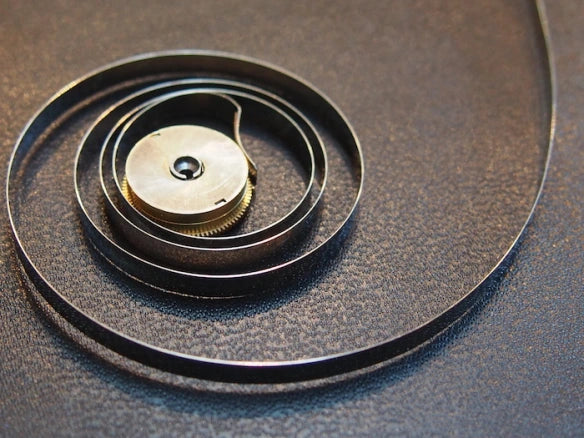Here’s the Scoop on What ‘Power Reserve’ Really Means
We are often questioned about what “power reserve” really means, so here we take an in-depth look at what the Swiss refer to as “Reserve de Marche.”

Essentially, when a mechanical watch is fully wound, it will continue to work for a designated number of hours — even when laid on your dresser — before needing to be rewound. The length of time the watch will continue to run is called its power reserve. Watches have differing lengths of power reserve based on their mechanics.
This is how it works: To power a watch, a host of gears, teeth, barrels and springs must interact. But it is the spring and barrel that essentially keep the watch operating. A long piece of metal is tightly wound into a spring and then placed inside a cylinder or barrel. This is where the energy is stored. The spring releases its tension in a consistent manner, offering constant energy to power the watch at a regular rate.
The amount of power a watch has is determined by many factors, including the number of barrels and springs. A watch with a longer power reserve will usually have two barrels and two springs.
Additionally, power reserve can differ from watch to watch depending on whether the mechanical watch is manually wound (by the wearer) or is an automatic watch (wherein the rotor of the watch automatically winds during use). The norm on an automatic watch is 36 to 42 hours, while a manual wind watch can be equipped with enough power reserve to last for week (and in extreme circumstances, longer).

Some watches offer what is a called a power reserve indicator on either the dial or the case back. This tells how much power is left in the watch before needing to be wound. Indicators are most often shown via a subdial with a hand pointing to a number that shows the remaining power. Sometimes that indication shows a color palette instead of a number. This type of indicator often displays a blue or white color and then a bright red area. When the hand is in the red, it means it’s time to wind the watch.
Other indications may use plus or minus signs, an up or down indication, or a linear read out. Some watches do not offer power reserve indications and you just need to know when you wore the watch last to know that it may need to be wound to avoid having to reset the time. Even better, you can use an automatic watch winder to keep your automatic timepieces wound perfectly all the time.